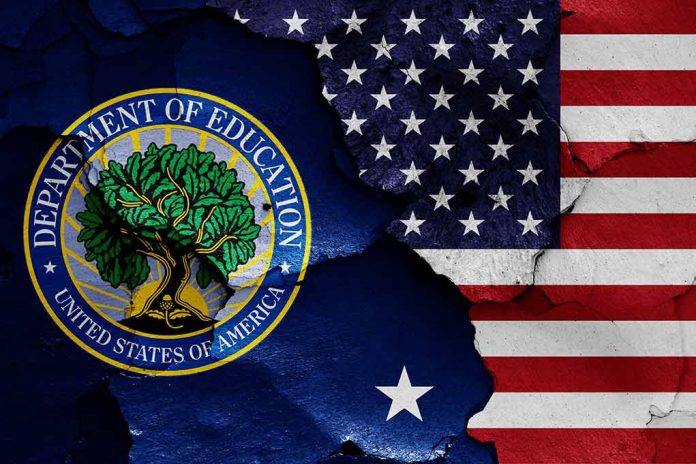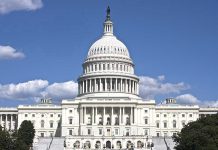
President Trump reportedly plans to dismantle the Department of Education, potentially shifting control of schools to individual states.
Key Takeaways
- Trump is considering executive actions to dismantle the Department of Education.
- The initiative aims to reduce federal influence and increase state control over education.
- White House Press Secretary Karoline Leavitt confirmed Trump’s intention to deliver on this campaign promise.
- Critics argue that dismantling the department could impact educational standards and resource allocation.
- Complete elimination of the department would require Congressional approval.
Trump’s Bold Move to Reshape Education
In a significant policy shift, President Donald Trump is reportedly planning to use executive actions to dismantle the Department of Education. This move aligns with his campaign promise to reduce federal influence over education and grant individual states more control over their educational systems. White House Press Secretary Karoline Leavitt has confirmed the administration’s commitment to this initiative.
“President Trump campaigned on that promise, and I think the American people can expect him to deliver on it,” stated Leavitt in a recent interview.
Addressing Educational Shortcomings
The Trump administration cites poor literacy and math rates among American students as a primary reason for the proposed changes. Leavitt highlighted the ineffectiveness of current federal spending on education, pointing out that only 40% of fourth graders are reading at a proficient level despite significant financial investment.
“When you look at the literacy rates, the math and the reading rates of young children and students in America, they are not good. Our nation’s report card was released last week, and it showed that only 40% of fourth graders are reading at a proficient level. So clearly, the tens of millions of dollars that the Department of Education is spending every single year is not working. And President Trump wants to empower parents to have a greater say in their child’s education system,” Leavitt explained.
The Scope of Change
While Trump’s desire to eliminate the Department of Education entirely would require Congressional approval, his administration is preparing an executive order to significantly reduce its size and functions. This order could potentially shut down non-statutory functions of the department or transfer them to other agencies. The move is part of Trump’s broader agenda to make the government more accountable to taxpayers and empower parents in their children’s education.
Trump has already taken steps in this direction during his previous term, signing executive orders to remove federal funding from K-12 schools teaching critical race theory and to support school choice. His nomination of Linda McMahon to run the Education Department came with the directive “to put herself out of a job,” underlining his desire to see the department done away with.
The Department of Education's budget for fiscal year 2025 is $82.4 billion, with an average salary of $112,164, 56% higher than the average government employee.
Since its formation in 1979, the US has gone from 1st to 34th in OECD ranking.pic.twitter.com/8s2gRXHCPc
— John LeFevre (@JohnLeFevre) February 3, 2025
Implications and Challenges
The Department of Education, established in 1979, currently manages a $1.6 trillion student loan program and has a budget of $241.7 billion for fiscal year 2024. Its closure could potentially shift oversight of these programs to other agencies or the private sector. Critics argue that dismantling the department could impact the maintenance of consistent educational standards and access to resources across states.
While Trump cannot legally shut down the department without Congress, his executive order could significantly reduce its size and influence, potentially pressuring Congress to consider its elimination. This move aligns with Trump’s vision of returning control of schools to states and reducing federal bureaucracy in education.
As the debate continues, the future of American education hangs in the balance, with potential far-reaching consequences for students, parents, and educators across the nation.









